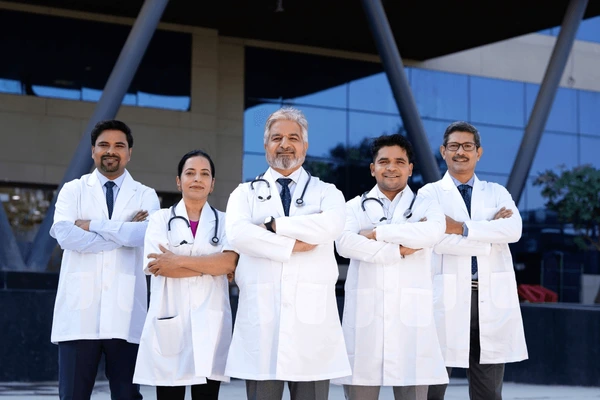Stretch Marks Treatment
Effective Stretch Marks Treatment
Are stretch marks affecting your confidence? Want to flaunt smooth, even skin again? At Krishna Hospital in Sagwara, we understand how stretch marks (striae) can impact self-esteem, and we’re here to help with expert, effective treatment options—all delivered with compassion and clinical excellence.
What are Stretch Marks
Stretch marks (striae) are fine, scar-like lines that develop when skin thickness changes rapidly—like during pregnancy, sudden weight fluctuations, or growth spurts. They commonly appear on the abdomen, thighs, breasts, lower back, buttocks, and upper arms.
Who is prone to stretch marks?
They often affect:
-
Pregnant individuals
-
Those undergoing quick weight gain or loss
-
Adolescents experiencing growth spurts
-
Bodybuilders or anyone rapidly increasing muscle mass
-
People with genetic predispositions or certain medical conditions
-
Users of long-term corticosteroids
Symptoms & Apperance
-
Slightly depressed, linear marks
-
Discoloured streaks ranging from red, purple, to pale white
-
Itchy or irritated skin
At our clinic, we offer a comprehensive blend of non-invasive and advanced therapies to reduce the appearance of stretch marks—all customized to your skin type and needs:
-
Topical Therapy
-
Clinically proven creams and gels—often containing hyaluronic acid or retinoids—help hydrate the skin, enhance texture, and improve elasticity.
-
Daily application over several weeks yields noticeable results, particularly in newer stretch marks.
-
-
Laser Skin Resurfacing
-
A precise laser beam targets affected layers, inducing exfoliation while stimulating collagen regeneration in the deeper dermis.
-
Visible improvement follows soon after treatment, with continued progress over the next few months. Multiple sessions may be recommended.
-
-
Microneedling + PRP (Platelet-Rich Plasma)
-
Microneedling creates tiny channels in the skin to boost natural healing and collagen production.
-
Combining this with PRP—rich in growth factors—enhances results, making skin firmer and smoother.
-
-
PRP Therapy Alone
-
PRP injections use your own blood’s healing factors to enhance skin renewal and reduce stretch marks.
-
- Top-Notch Skin Care
- Experienced Dermatologist
- Advanced Yet Affordable Treatments
Experienced Team of Doctors
Our experienced doctors at Krishna provide exceptional, personalized care

Lakhs of Smiles & Counting
With over 1 lakh happy patients, we’ve proudly restored clarity and vision—helping people experience the world in a whole new light.
EXCELLENTTrustindex verifies that the original source of the review is Google. Best doctor in sagwadaPosted onTrustindex verifies that the original source of the review is Google. Posted onTrustindex verifies that the original source of the review is Google. Posted onTrustindex verifies that the original source of the review is Google. Posted onTrustindex verifies that the original source of the review is Google. Posted onTrustindex verifies that the original source of the review is Google. Posted onTrustindex verifies that the original source of the review is Google. Verified by TrustindexTrustindex verified badge is the Universal Symbol of Trust. Only the greatest companies can get the verified badge who has a review score above 4.5, based on customer reviews over the past 12 months. Read more


